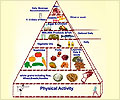
The world's population will increase from 7.3 billion people to 9.7 billion in 2050 and 11.2 billion at the century's end, the findings showed.
Asia, with a current population of 4.4 billion, is likely to remain the most populous continent, with its population expected to peak around the middle of the century at 5.3 billion and then to decline to around 4.9 billion people by the end of the century.
"The probability that world population growth will end within this century to be 23 percent," Wilmoth added while addressing a session focused on demographic forecasting at the "2015 Joint Statistical Meetings" (JSM 2015) in Seattle.
The world population growth will not stop in this century unless there are unprecedented fertility declines in those parts of sub-Saharan Africa that are still experiencing rapid population growth.
According to models of demographic change derived from historical experience, it is estimated the global population will be between 9.5 and 13.3 billion people in 2100.
Advertisement
"The continent's population growth is due to persistent high levels of fertility and the recent slowdown in the rate of fertility decline," Wilmoth noted.
Advertisement
The results have important policy implications for governments across the globe. "Rapid population growth in high-fertility countries can exacerbate a range of existing problems - environmental, health, economic, governmental and social," said Wilmoth.
Source-IANS















